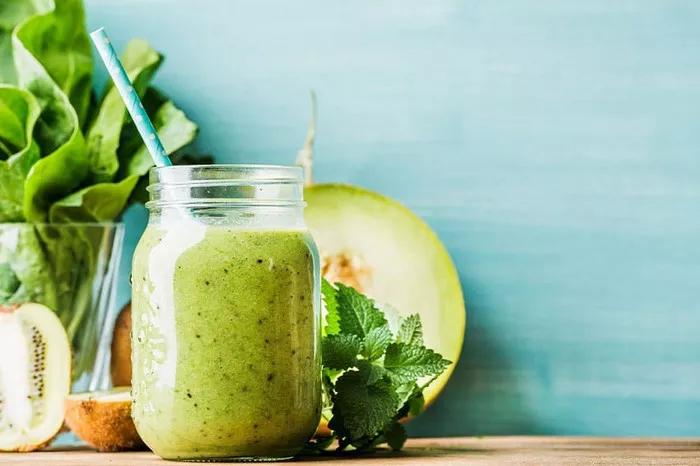Creating the perfect meal plan for a day requires balancing nutrition, taste, and practicality. A well-designed meal plan provides the body with all the necessary nutrients it needs while ensuring you feel satisfied and energized throughout the day. In this article, we will explore how to structure your meals for optimal health and well-being, considering breakfast, lunch, dinner, and snacks, while also taking into account various dietary needs.
Why a Meal Plan is Important
A meal plan helps you make healthier food choices. It takes the guesswork out of what to eat and ensures you get the right balance of nutrients. A perfect meal plan should include a variety of foods that supply protein, healthy fats, carbohydrates, vitamins, and minerals. When you plan your meals properly, it helps to maintain energy levels, control hunger, and prevent overeating. It can also aid in weight management and overall health.
Breakfast: The Most Important Meal of the Day
Breakfast is the first opportunity to fuel your body after a night of rest. It should be nutrient-dense to start your day with energy and a positive metabolism.
1. Protein-Packed Foods
Eating a protein-rich breakfast is important for muscle repair and recovery. It helps to keep you feeling full for longer, reducing the temptation to snack before your next meal. Some great options include eggs, Greek yogurt, or a protein smoothie.
2. Whole Grains for Lasting Energy
Including whole grains, such as oatmeal or whole-wheat toast, is an excellent choice for sustaining energy levels. Whole grains provide complex carbohydrates that are slowly digested, keeping your blood sugar stable and preventing energy crashes.
3. Healthy Fats for Brain Function
Healthy fats are essential for brain function and hormone production. Include sources of unsaturated fats, like avocado, nuts, or seeds, to support cognitive health and to keep you feeling full.
4. Fruits and Vegetables for Vitamins
A serving of fruits or vegetables in the morning helps to supply essential vitamins and minerals. Fresh fruits like berries, apples, or oranges provide a boost of vitamin C, while leafy greens, such as spinach or kale, offer fiber and antioxidants.
Sample Breakfast Ideas:
- Scrambled eggs with spinach and whole-grain toast
- Greek yogurt topped with mixed berries and chia seeds
- Oatmeal with almond butter, banana slices, and a sprinkle of cinnamon
- A smoothie made with protein powder, spinach, almond milk, and a handful of mixed berries
Lunch: Balanced and Satisfying
Lunch is often the meal where people can either feel rushed or overwhelmed by hunger. The perfect lunch should include a balance of protein, fiber, and healthy fats to keep you full and focused for the rest of the day.
1. Lean Protein Choices
Protein is a critical component of lunch to help with muscle repair and maintenance. Lean protein sources, such as grilled chicken, turkey, tofu, or legumes, are excellent choices. These options are lower in fat, making them heart-healthy.
2. Fiber-Rich Vegetables
Fiber from vegetables promotes digestion and helps regulate blood sugar levels. Vegetables like broccoli, bell peppers, carrots, and leafy greens provide fiber along with antioxidants, which help fight inflammation.
3. Healthy Carbs for Energy
While protein and fat are important, carbohydrates are still a key part of a balanced meal. Whole grains like quinoa, brown rice, or whole-wheat pasta provide slow-burning energy and help to keep you satisfied throughout the afternoon.
4. Healthy Fats for Satiety
Healthy fats in your lunch help slow the digestion process, making you feel full for longer. Olive oil, nuts, and seeds are great additions to your meal. They also offer heart-healthy monounsaturated fats.
Sample Lunch Ideas:
- Grilled chicken salad with mixed greens, avocado, quinoa, and olive oil dressing
- Whole-wheat wrap with hummus, grilled vegetables, and a side of fruit
- Brown rice bowl with salmon, steamed broccoli, and a drizzle of sesame oil
- Tofu stir-fry with bell peppers, zucchini, and a sprinkle of sesame seeds
Dinner: Light Yet Nourishing
Dinner is typically the last meal of the day and should be lighter than lunch, but still provide all the nutrients your body needs for overnight recovery. A well-balanced dinner helps to keep your blood sugar stable and prevent late-night cravings.
1. Lean Protein for Muscle Repair
Just like lunch, protein is vital for muscle repair, especially if you’ve had an active day. Opt for lean sources of protein such as fish, chicken, turkey, or plant-based options like lentils and beans.
2. Non-Starchy Vegetables for Low Calories
Non-starchy vegetables, such as cauliflower, zucchini, or asparagus, should make up the bulk of your dinner. These vegetables are low in calories but high in nutrients, making them an excellent choice for dinner.
3. Healthy Carbs for Digestion
A small serving of complex carbohydrates can still be included at dinner. Sweet potatoes, whole grains, or legumes are good options, but keep portions moderate to avoid excess calories before bedtime.
4. Healthy Fats for Hormonal Balance
To round out your dinner, add a small amount of healthy fats. This could include a drizzle of olive oil on vegetables, a handful of walnuts, or a side of avocado.
Sample Dinner Ideas:
- Grilled salmon with roasted asparagus and quinoa
- Baked chicken breast with sweet potato and sautéed spinach
- Lentil stew with tomatoes, carrots, and a side of steamed broccoli
- Stir-fried tofu with bell peppers, mushrooms, and brown rice
Snacks: Healthy and Filling
Snacks help to maintain energy levels between meals and prevent overeating. Choosing the right snacks can keep your metabolism high and curb hunger without compromising your health goals.
1. Protein-Rich Snacks
Including protein in snacks helps prevent blood sugar spikes and keeps you feeling satisfied. Greek yogurt, cottage cheese, or a handful of almonds are great examples of protein-packed snacks.
2. Fiber to Keep You Full
Snacks with fiber, such as vegetables or fruit, will help to keep you full. Apples, carrots, or a small serving of hummus with cucumber can make for excellent snack choices.
3. Healthy Fats to Satisfy Cravings
If you’re craving something filling, healthy fats like a handful of nuts, seeds, or a slice of avocado can do the trick. These options provide slow-releasing energy and are great for balancing out blood sugar levels.
Sample Snack Ideas:
- A small handful of mixed nuts and seeds
- Greek yogurt with a spoonful of chia seeds
- An apple with a tablespoon of almond butter
- Veggies and hummus
Hydration: Don’t Forget Your Water
Proper hydration is an essential part of any meal plan. Water helps with digestion, nutrient absorption, and overall bodily functions. Aim to drink at least 8 cups of water throughout the day, or more if you’re active.
Tips for Staying Hydrated:
- Drink a glass of water with each meal
- Carry a reusable water bottle to remind yourself to drink regularly
- Herbal teas, such as green tea or peppermint, are also good options for staying hydrated.
Perfect Meal Plan for the Day:
Breakfast:
- Scrambled eggs with spinach and whole-grain toast
- A smoothie with protein powder, spinach, almond milk, and berries
- A piece of fruit (apple or banana)
Lunch:
- Grilled chicken salad with quinoa, mixed greens, avocado, and olive oil dressing
- A side of fruit, such as an orange or a handful of berries
Snack:
- Greek yogurt with chia seeds or a small handful of mixed nuts
Dinner:
- Grilled salmon with roasted cauliflower and a side of sweet potatoes
- A small serving of avocado or olive oil drizzled on vegetables
Snack (Optional):
- Veggies with hummus or a boiled egg
Conclusion
The perfect meal plan for a day is one that is well-balanced and includes a variety of nutrients. By focusing on lean proteins, healthy fats, fiber-rich vegetables, and whole grains, you can create meals that keep you energized, satisfied, and healthy. Remember, hydration is just as important as food, so be sure to drink plenty of water throughout the day. With the right approach to planning, you can nourish your body and maintain a healthy, balanced lifestyle.
Related topics:























